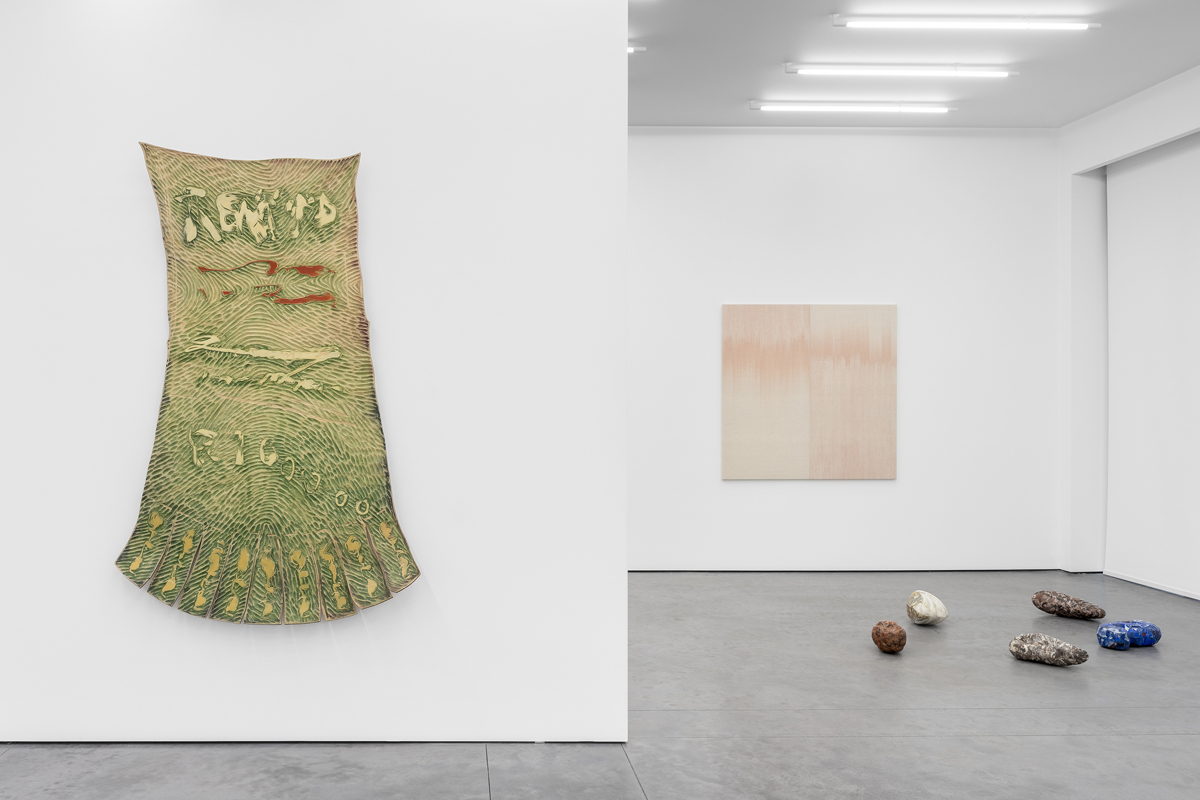
MATTER OF FACT
In The Life of the Mind, Hannah Arendt distinguishes between the world of appearances (the material world) and the world of thought (invisible, conceptual): The activity of thinking as such can never be translated into any tangible results.
Weight in the world of things. Hands shape wood, stone, fiber, pigment. Or not stone, but something like it. Wood, or something that once was. Colours that bring news from upstream. Mix, grind, carve, pull, weave. Motions etch existence. In Matter of Fact, Whitehouse Gallery presents the work of Lola Daels, Céline Vahsen and Anna van der Ploeg in dialogue. Though distinctly physical, each artist’s practice contains something elusive, an underpinning that cannot be reduced to the tangible. These three Brussels-based artists inhabit a threshold where matter itself is evident in a way that opens up to all that is beyond matter.
Lola Daels follows the human urge to imitate natural phenomena and questions the desire to emulate nature. Her materials—sometimes industrial, sometimes natural—do not sit quietly. They tell of disruption, of intrusion, of the paradox that reproduction often involves products that pollute. Recently, Daels’ research has focussed on disused imitation techniques, specialising in two Italian variations: scagliola (false marble) and pietra dura (stone inlay). A dialogue between nature and the human hand. Daels collaborates with specialists to investigate contemporary ways to continue the craft while eliminating the polluting aspect of these techniques. In the sculptures she creates, objects contain swirl and stagnancy polished almost to a mirror.
Céline Vahsen’s works explore the cultural legacy of the textile medium, experimenting within a personal and contemporary approach. The artist uses mostly organic cotton and wool to weave canvases, creating her own colours by grinding roots and barks of a variety of vegetations, to extract dyestuff from. The surfaces of her two-dimensional pieces comprise of patterns, or glitches, emerging through randomness and contribute to the visual outcome, challenging the tension at play between chance and order. She develops compositions and patterns from traditional methods, transporting the textile heritage into the realm of visual art. Mounted on frames, these composed fabrics make it possible to see the colours in vibration, transforming them into painting-like works.
Anna van der Ploeg’s carved sculptures capture the inherent impulse of inscription. Tableaus and tablets reminiscent of artefacts contain a desire to communicate through writing and play. Chiselled and sanded wood, carved, bent with steam, the artist creates reliefs of intrinsic behaviours and desires. Grains in a rooted substance become breath, language incised into an object that transforms itself through inquisition. Van der Ploeg collaborates with writers and found written matter, to identify and then unravel scripts and the prescribed.
While dust settles and fossilises, liquids separate and congeal. Wood bends, paint settles. Colour pools.
In The Human Condition, (1958) Arendt speaks about the distinction between the vita activa - active life - and the vita contemplativa - life of contemplation. The things of the world have the function of stabilising human life, and their objectivity lies in the fact that—in contrast to the inherent futility of life—they themselves possess a measure of independence from it. Each of these three artists’ work possesses a tension between the material, durable object and the intangible. Objects anchor human existence but remain entangled in broader, more ephemeral processes. In this show, the physical is a door, but ideas walk you through it. Tactile, technical, precise - this is the threshold.

